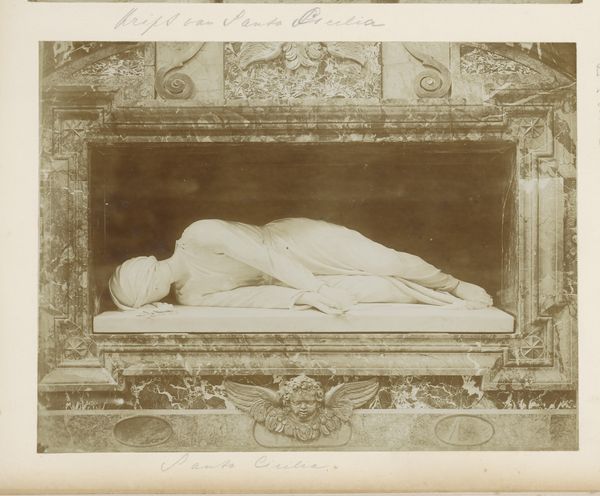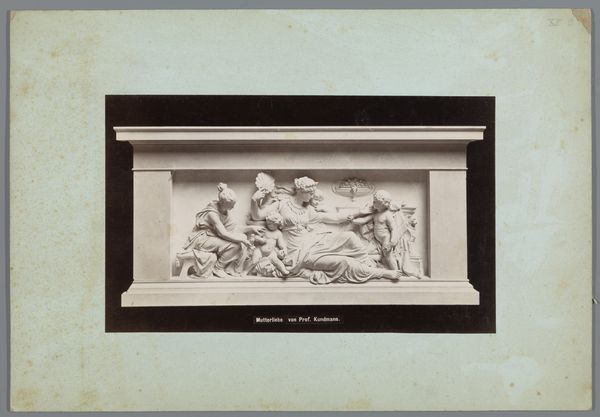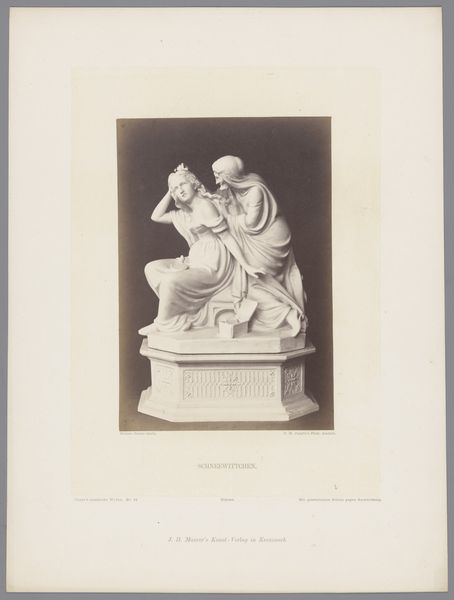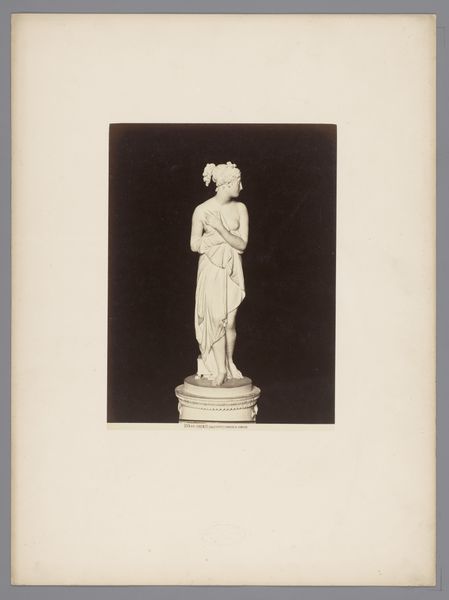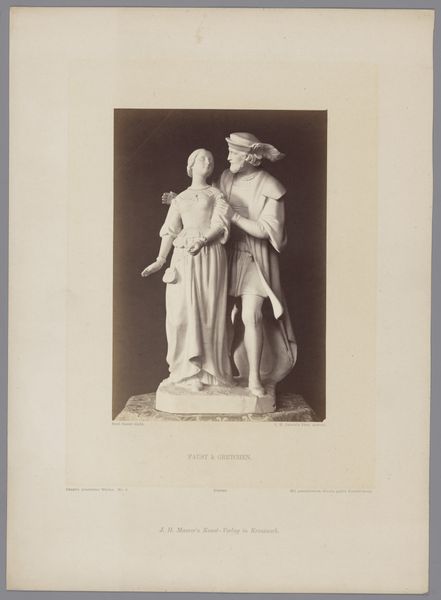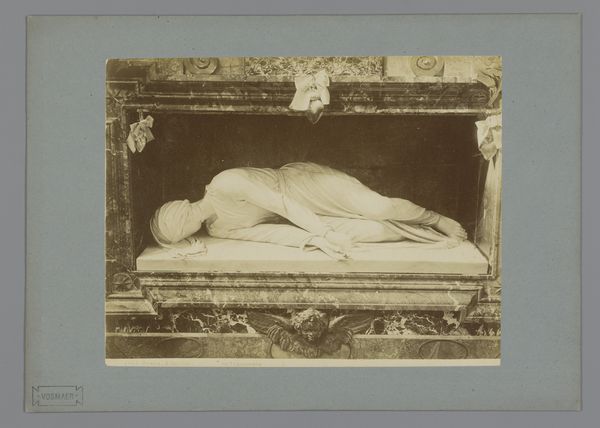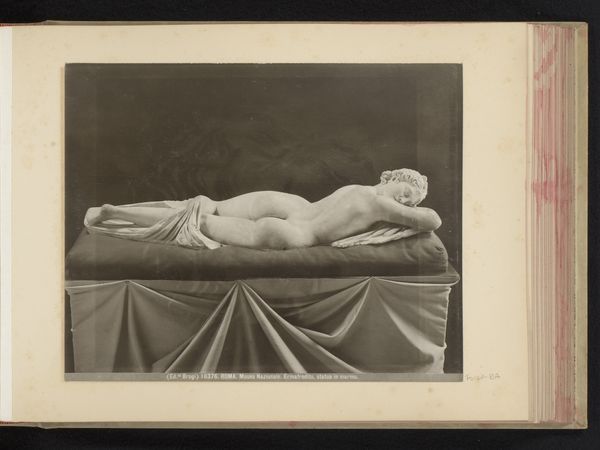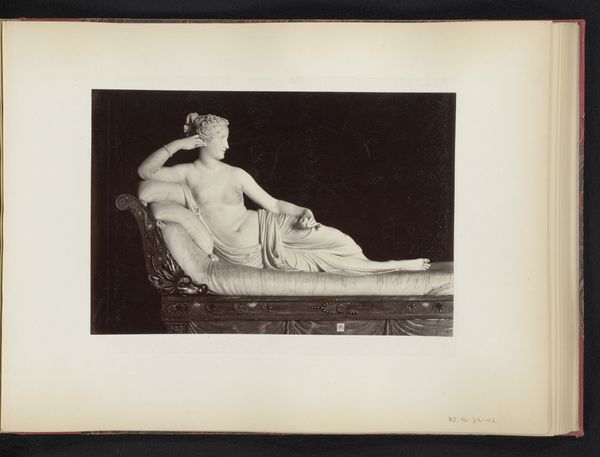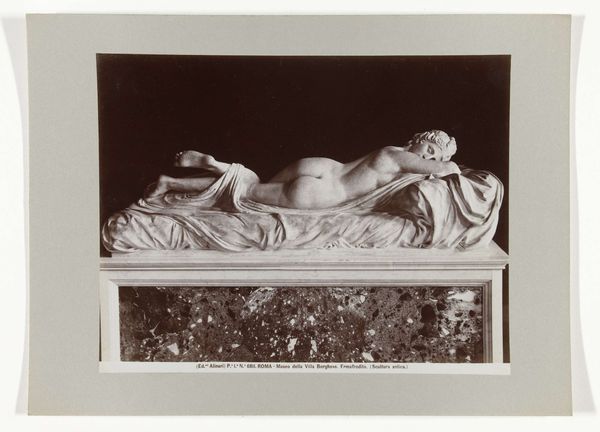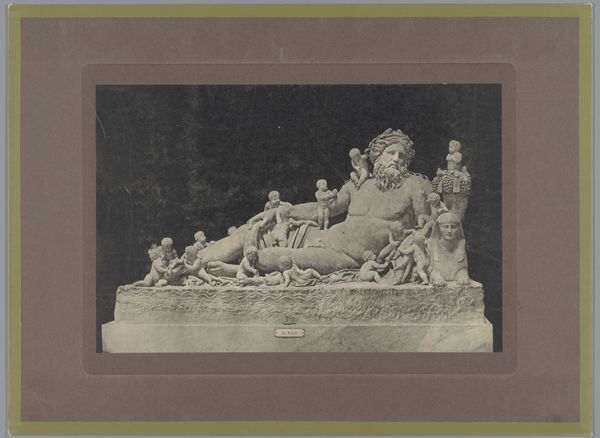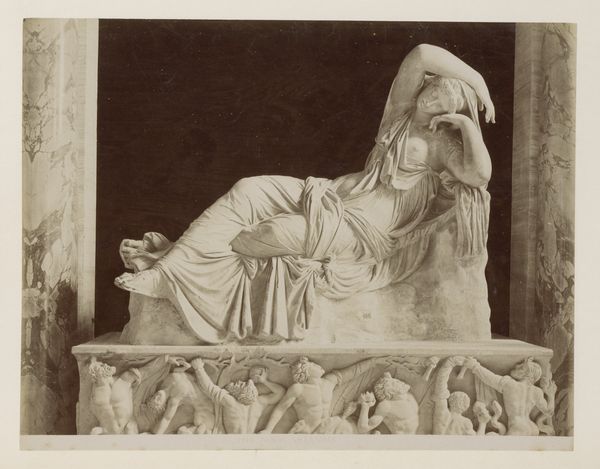
Dimensions: height 351 mm, width 487 mm, height 163 mm, width 215 mm
Copyright: Rijks Museum: Open Domain
Curator: This image evokes a peculiar stillness. It feels almost staged, like a theatrical tableau frozen in time. Editor: Indeed. What you are looking at is a gelatin silver print, crafted around 1860 by Louis-Auguste Bisson, entitled "Graftombe van Duchesse de Luynes" which translates to “Tomb of the Duchess of Luynes.” Bisson was a prominent photographer, especially known for architectural studies and portraiture of the French elite. Curator: It certainly reads as both, doesn't it? The composition, with its stark contrast and shallow depth of field, renders the sculpted figure almost lifelike, enhancing the work's unsettling nature. It’s also interesting how the use of photography here plays with the themes of memory and representation; like, is it actually preserving her memory or is it re-writing it in a particularly romantic way? Editor: Trompe-l'oeil was in vogue at the time and many photographers were doing the best they could to achieve this very effect. This particular tomb, the tomb sculpture of the Duchesse de Luynes, serves not just as a commemoration but also a demonstration of social status. Aristocratic patronage and societal expectations clearly dictated artistic expression. Curator: But to have a sculpture displayed as your persona for eternity must bring an extra level of surveillance from the community. This pressure must play an impact on both class and gender constructs. What did it mean to the communities around the Duchess, for them to accept and admire such a visual display that seems to have gone through some level of production? The image, therefore, isn't just about a duchess or about a death, but it’s an archive of the complex relationship between power, visuality, and societal norms during the mid-19th century in France. Editor: Absolutely. Bisson’s choice of medium further underscores this intention. Photography's unique capacity to capture detail lent a sense of verisimilitude to his portrayal, which allowed broader public engagement with noble effigies, previously viewed by an exclusive elite. Curator: It serves as a constant reminder to all future women looking to inherit some sense of the Luynes legacy about their public appearance and performance, what an intense commitment to be admired forever! It seems so daunting. Editor: I think it highlights a specific cultural moment where the lines between art, social statement, and photographic innovation were deeply intertwined. Curator: I agree. It offers insight into an individual's memory as well as a study on the cultural performance surrounding elite death.
Comments
No comments
Be the first to comment and join the conversation on the ultimate creative platform.

